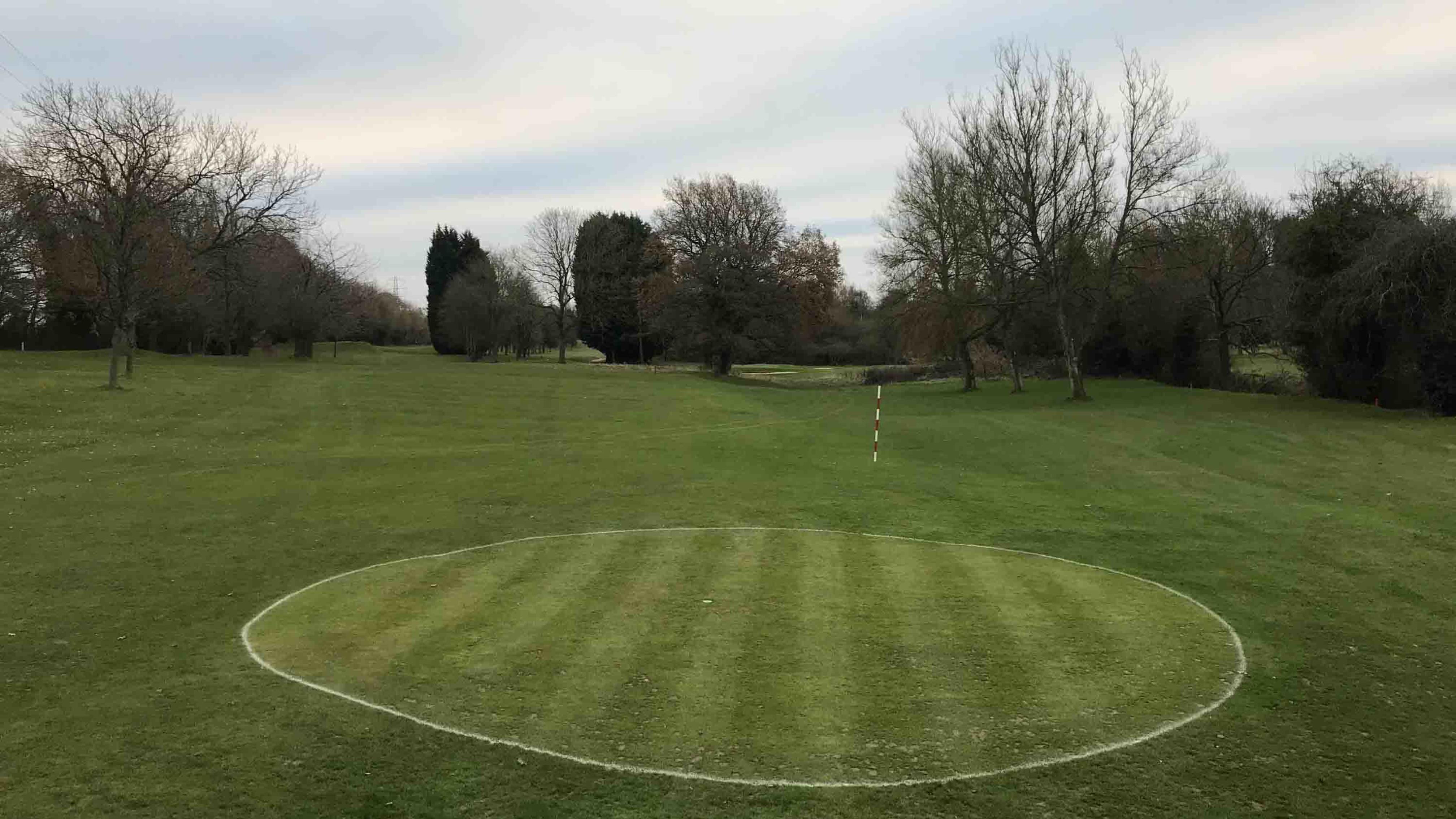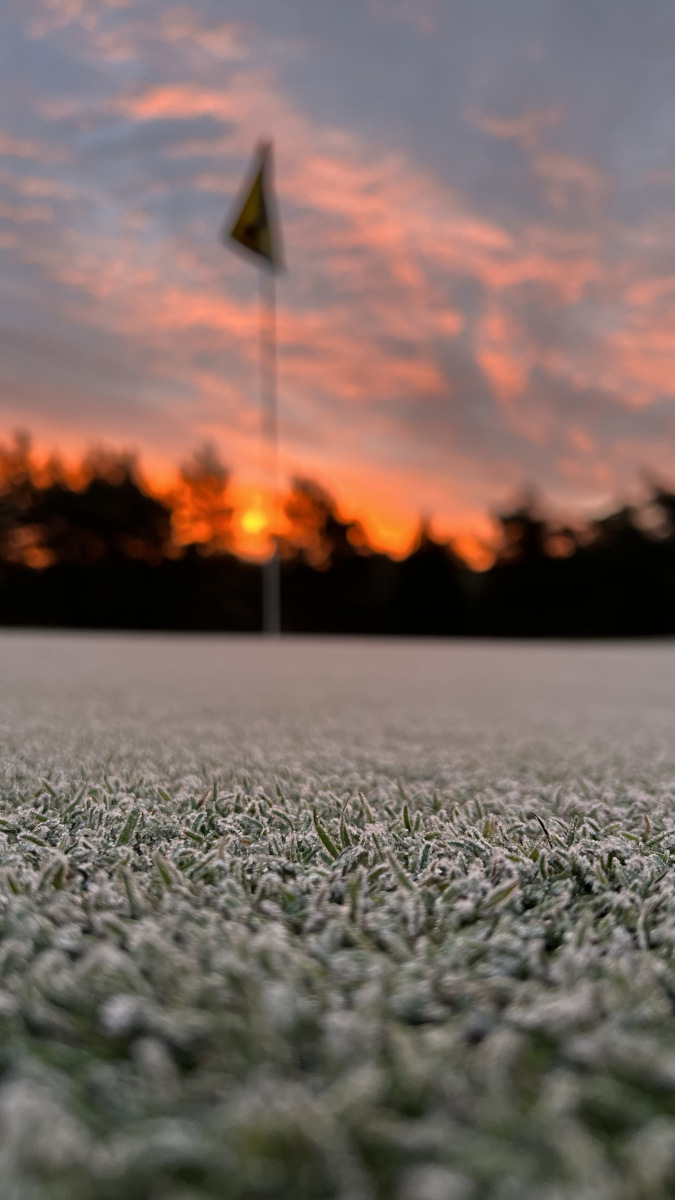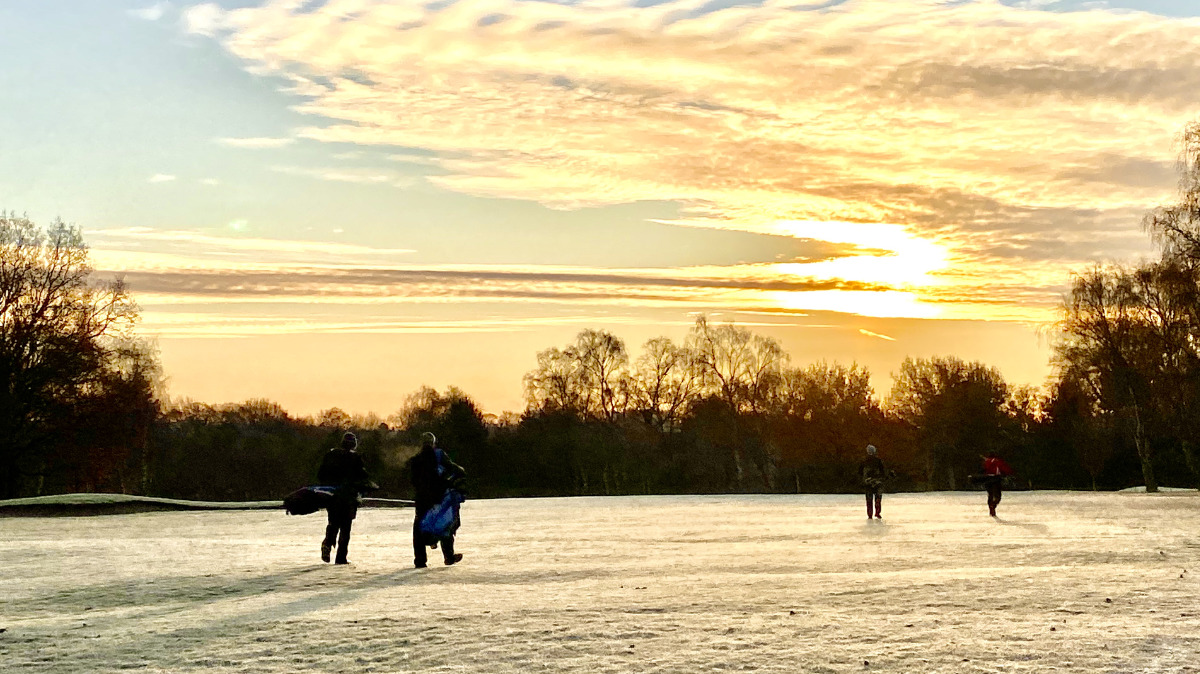- Homepage
- News and Features
- Should you play on winter greens when it is frosty?
Should you play on winter greens when it is frosty?
It's a topic that sparks debate at golf clubs all over the country, so BIGGA asked two greenkeepers their contrasting opinions on the use of winter greens.

First published January 2019
Should you play on winter greens when it’s frosty? Why do some golf clubs choose to close their greens and force golfers to play on temporaries when frost hits, but others don’t?
What happens to grass during a frost?
In general terms, the less stress a plant is put under during the winter months, the healthier it should be when the weather warms up.
When grass freezes, water within its cells expands and this can put the membranes under a huge amount of pressure.
With the grass largely dormant during the winter, this is a time when it is at its most vulnerable.
When golfers tread across a frozen green, the compaction can cause bruising underfoot. The barriers between the cells break and the plant is killed from the inside.
As the temperature then rises and the green thaws, the dead grass turns brown and wastes away. This damage can last well into the spring.

Yes, we use winter greens - it protects them for the season ahead

Dale Housden
Course Manager, Hollywod Golf Club
Why does Hollywood use temporary greens?
We do it to protect our main greens from any additional wear during periods of poor weather conditions, such as frost or rainfall. It is to ensure our greens are ready to go as soon as possible in the spring.
Have you ever thought about just running on those main greens all year round?
Yes and we have done so previously. I can see the pros and cons on both sides of the debate
So what happens to your greens if you don’t use temporaries in the winter?
If we do not rest our greens during periods of frost, they begin the season in a much poorer state.
This then requires an increase in dressings, to smooth imperfections and so on, to make them ready for the main playing season.
If we didn’t use temporary greens, the main greens would be around three to four weeks behind and that’s prior to the additional turn around work.
What sort of damage can be caused?
From previous experience, I have noted slight bruising on the turf leaf - causing some obvious black burn marks initially.
In delicate cases it causes some root searing when the greens are played on during the vital thaw period. Long term, this gives the roots a hard time when we exit the colder period and slows down the recovery in the spring.
When we have played on frozen greens, this forced us to topdress more during the winter months and at the start of the spring to avoid the greens coming on later than we wish.
When would you take the decision to use temporary greens?
They are used during periods of morning frosts or after heavy rainfall if they are flooded. Regarding our frost policy, if the greens are that hard and there is no possibility that the frost would come out that day – usually after regular minus temperatures – then the greens would remain on mains as there is no potential for root shearing.
The issue for me is that I want to restrict the play on main greens during that crucial period when the top layer is beginning to thaw.
When, and how, do you decide to put them back onto the main greens?
When I am confident that the frost has fully cleared, the flags are returned to the main greens. This is determined by using an eight-inch metal probe that goes into the top layer of the green and needs to penetrate fully into the soil. During the winter, if this is later than 1pm then the greens will remain on temporaries for the rest of the day.

No - we don't use temporary winter greens
What’s the thinking behind not using temporary greens?
We have a lot of play through the winter. We still have a lot of societies. We want to present the best course possible and so we leave them on mains as much as we can.
Over a period of time, we realised that we didn’t really have to go back to temporaries. We could present the main greens as well all the way through the year without having to rely on them.
What challenges does that decision bring?
I was at Trent Park and we didn’t use temporaries there because we didn’t have space. So I learned a lot about how to keep greens going without having to go on temporaries.
We carry out a lot of traffic control to restrict footfall around the greens. We rope off around every green so players can’t take trolleys and buggies near them.
For the green, it is about remembering the basics. That includes aeration and getting enough sand topdressing down during the year to keep them nice and firm.
We have USGA greens and they drain a lot quicker than clay. They don’t go as spongy on the top, which can potentially happen if you have got a lot of rain.
There seem to be a number of different views on whether to play on frozen greens?
It depends on what type of greens you have got. If you’ve got links grass with the fescues and bents, you need to protect those grasses because they don’t like people walking over them in the frost. They won’t deal with it very well.
My greens are very high in Poa (meadow grass) and, as long as we are remembering to carry out the tining work, I’ve never had an issue.
What are the keys factors to making this policy a success?
It’s about talking to the membership and letting them know that if we are going to play on main greens all year, we are going to need to get out there – sometimes at the drop of a hat – to be able to tine the greens. We might only be a two-day window and so it's important that they understand the reasons why we need to be out on the course.
For instance, last December we knew it was going to snow on a Wednesday so we aerated on Monday and Tuesday before the snow came in. The greens were hidden under the snow and then they came out a lot quicker and a lot firmer because the water from the snow had somewhere to go.
I’m very fortunate with our membership. They are very happy that they are going to be on mains so they put up with me going out with the aerator. It wouldn’t be like that if I didn’t communicate with them about what we're planning and why.
Presumably members and visitors love being on main greens all year round?
I’ve got one opportunity to give a first impression. If we are on mains and running well, even in the middle of winter, that’s a decent first impression and hopefully people will come back and spend money with us again.
This article was first published in Your Course in January 2019. Your Course aims to inform golfers about what goes in to the maintenance of a modern golf course and the greenkeepers whose job it is to produce the surfaces.
Author

